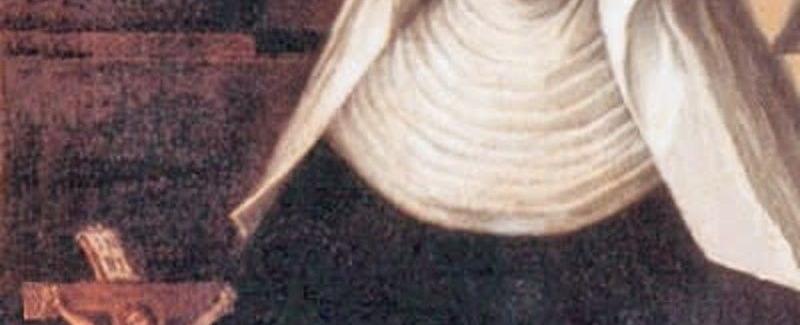Saint Maria Crescentia Höss: Known for a Deep Love of Prayer

On April 5, Franciscans remember Saint Maria Crescentia Höss, a cloistered sister of the Third Order Regular of St. Francis known for her deep life of prayer.
A devout child
Anna Höss (Hoess) was born in Kaufbeuren, Bavaria, in 1682, the daughter of poor wool-weavers. A devout child, she was allowed to receive her first Communion before the usual age. She used to pray privately at the chapel of a local Franciscan convent where she and her family hoped she might enter, but since the community was relatively poor, applicants were told they needed to bring a dowry with them, and her family could not afford this.
Received into the Third Order Regular of St. Francis
When she was 21, the Protestant mayor of the town, impressed by Anna’s transparent goodness, asked the monastery to admit her to the community in return for a significant favor; she was received in 1703 with the religious name of Maria Crescentia.

The Franciscan monastery in Kaufbeuren, Bavaria (Facebook: Creative Commons, Joachim Schäfer—Ökumenisches Heiligenlexikon)
Showing kindness to monastery guests and the poor
Crescentia’s early years in the monastery were difficult: many sisters felt she had been imposed on them and would not let her forget her humble origins. She was not given a cell of her own and was confined to menial tasks; her sunny disposition only served to irritate them. In 1707, a new mother superior finally accepted her as a full member of the community. She was entrusted with the important position of doorkeeper where she showed great kindness to guests and to the poor.
Giving sage advice and providing counsel and comfort
Crescentia was eventually made novice mistress in 1726 and held that position until 1741; in this role she gave sage advice and showed excellent discernment of candidates. She also wrote letters of counsel and comfort to many people. Word also began circulating about her intense mystical experiences.
Leading a deep renewal of Franciscan life
In 1741, the nuns unanimously elected Crescentia the mother superior, and she served in that role until her death. Although she held office only three years, the community experienced a deep renewal of their way of life. She showed great kindness to her sisters and emphasized turning to the Gospels for inspiration and readiness to serve each other. In addition, she proved a shrewd manager, and so the financial situation of the community improved.
Dying with joy and peace
Crescentia had always been troubled by ill health, but in these final years her hands and feet became crippled with arthritis, she lost her ability to walk, and her body eventually drew up into a fetal position. She often cried out: “Oh, you bodily members, praise God that he has given you the capacity to suffer.” She was filled with joy and peace as she died on Easter Sunday, 1744.

A late 18th- or early 19th-century image of Maria Crescentia
Popular devotion to Saint Crescentia
In the years following her death, popular devotional pilgrimages began making their way to Kaufbeuren. The monastery fell victim to political pressures. It was officially dissolved in 1806, even though the nuns were able to stay on in the building, and novices were again allowed to be received in the 1830s. Maria Crescentia was beatified by Pope Leo XIII in 1900 and canonized by St. John Paul II in 2001.
-----
Main image: A late 18th- or early 19th-century portrait of St. Maria Crescentia Höss
Dominic Monti, OFM
Professor of Franciscan Research in the Franciscan Institute of St. Bonaventure University
Dominic V. Monti, OFM, is a Franciscan Friar of Holy Name Province (USA) and currently professor of Franciscan Research in the Franciscan Institute of St. Bonaventure University. He devoted the greater part of his ministry to teaching the History of Christianity, in particular the history of the Franciscan movement. He has contributed two volumes to the Works of St. Bonaventure series and is author of Francis & His Brothers, a popular history of the Friars Minor.

